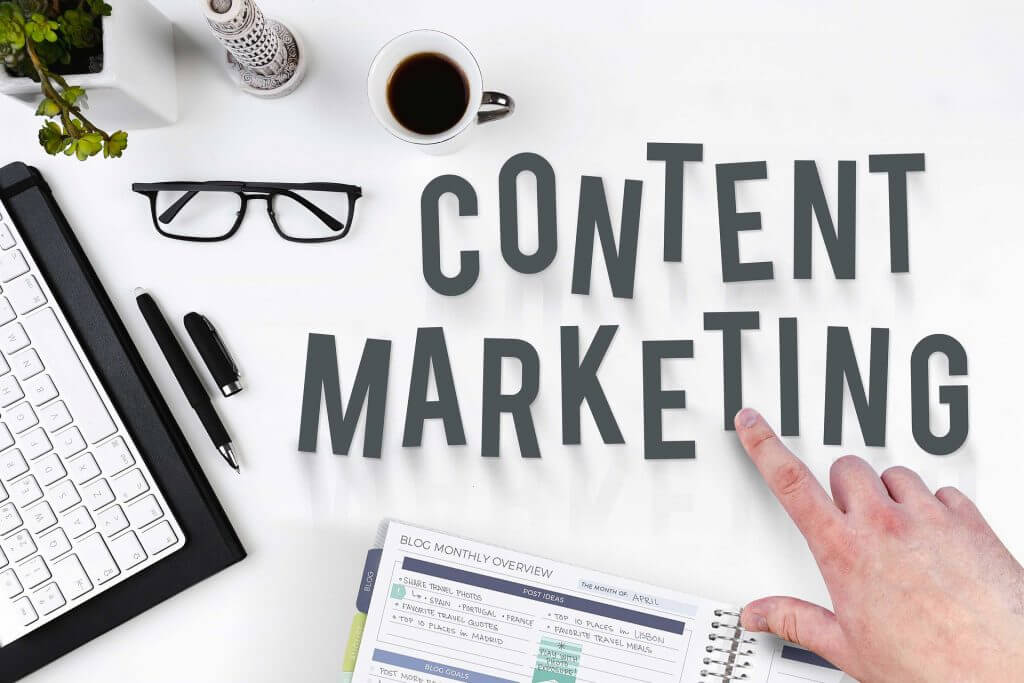What is a blog for in a marketing and sales strategy?
Nowadays, it is very common to turn to Google when we need to search for some information. And even more common that, among the results, we find various blogs whose posts do not report everything we were looking for. But, when it comes to business, if you already have a blog (whether in WordPress or not), a question arises: what is a blog for in a marketing and sales strategy?
After all, blogs are virtual spaces that are used to publish articles. Despite the fact that this generates relevance and authority for those who write, companies do not stay only with well-written texts, are they?
Well actually, blogs have become increasingly strong channels for business results, since they are used strategically .
And so you know how that is done, we decided to produce this article. So keep reading to better understand what a blog is, how it should be used in sales and marketing actions, and also how you can create one today.
But, in the end, what is a blog? What is a blog for?
Table of Contents
There was a time when blogs were personal channels that the public used to talk about their life and other particular matters. But, it is clear that, today, that panorama changed.
A blog is a digital tool used by companies to attract their ideal audience and generate engagement with the aim of obtaining more business opportunities . Contrary to what some believe, a corporate blog is different from a website , as its proposals are different, as you will see below.
What is the difference between a website and a blog?
The website is the main channel of your Digital Marketing strategy . After all, it contains the most important information about your business, such as:
- about us;
- products and services;
- work with us;
- Contact;
- among other points.
On the other hand, the blog is aimed at generating content that mostly deals with issues related to your sector of activity . A mistake that some companies make when they start developing Content Marketing without proper guidance is creating blog posts that only talk about their products and services.
But the company needs to talk exclusively about its offers on its channels to attract the public and thus do more business, right? No , at least when it comes to blogging.
But then, what kind of content should you post on a blog?
Within a content strategy , the articles of a blog should be, for the most part, aimed at informing and educating the public according to the stages of the buying journey set by your buyer persona.
A buyer persona is a semi-fictional character that represents your ideal customer. And to get to your company, go through a buying journey represented by the sales funnel that is made up of 3 stages:
- Top of the funnel : moment when the buyer person discovers that they have a problem.
- Middle of the funnel : here, the buyer persona looks for ways to solve it.
- Bottom of the funnel : at the end, the buyer person discovers who can solve their problem.
Right, but what does that have to do with content production? Well, following the Pareto Chart, 80% of your content should be dedicated to the top and middle of the funnel and 20% to the bottom.
To make this concept clearer, let’s see examples of issues corresponding to each stage of the funnel.
On the one hand, suppose a travel agency has a blog and wants to use it to attract more customers. On the other hand, your buyer persona likes to travel and is considering taking a family tourism trip. So, your content can follow this line:
- Top of the funnel : «Discover the advantages of taking a family trip».
- Middle of the funnel : “7 tips to make a perfect trip with your family.”
- Bottom of the funnel : «Discover our promotions for family trips».
As you can see, the first issue is aimed at the problem that the person has at the top of the funnel, the second, at the tips they are looking for in the middle and the third, to find out more about who can solve their problem at the bottom of the funnel. .
Therefore, you can talk about your company, but in a measured way and at the right time. Next, we will talk about how each type of content is used strategically.
How can a blog be used in a marketing strategy?
Now that you understand what are the types of blog posts that make up a corporate blog, it is time to see what the functions of each are within your strategy.
Attraction of visitors to your blog
The items of attraction correspond to the top of the funnel . After all, by dealing with the problems that the buyer persona has, you will be able to attract a greater number of readers who are still at the top (that’s why the process is represented by a funnel, because the top equals the stage where it is most of your audience).
Therefore, writing these articles is essential to attract more and more new visitors to your blog. For this reason, the CTA at the end of the text is usually an invitation to leave a comment or suggestion to share the post on social networks and make more people find your content for being informative and useful.
Visitor engagement on the blog
The contents of the middle of the funnel are more aimed at generating engagement . As the reader is closer to the time of purchase, as they are looking for tips on how to solve their problem, the article can lead them to take the next step. Are we going to see a practical example using the same case of the travel agency and your traveling buyer persona?
When conducting a Google search for “tips for family trips”, your buyer persona arrives at the article “7 tips to make a perfect trip with your family”. After reading the 7 tips, you may be interested in knowing which are the best destinations for take this kind of trip, don’t you think?
Therefore, the CTA of the text can be the invitation to download an e-book that brings the list of the main destinations. To obtain this material, you must complete your basic information, such as name, email and telephone number, and in return you can download it for free.
With this information, you can create an Email Marketing nutrition flow to make the person receive content in their inbox. The last email in the flow should be a call with the link to buy the product (in the case of our example, a travel package) or a link to schedule a talk with a commercial consultant.
Conversion into sales within your blog
However, the blog can also attract people who are ready to buy your offer, right? For that there are the conversion articles, which are connected to the bottom of the funnel .
To be more specific, we recommend that you write them yourself or someone from your company (if you want to know more about the subject, take a look at this free Rock Content Content Marketing course ). Your CTA should take the reader until the end of the day to make them buy your product (in the case of an e-commerce ) or talk to a seller (if your offer is an advisory sale).
If it is necessary for people to speak with a consultant before making the purchase, the contents of your blog can also help you to realize those sales. We explain it to you below.
How can a blog be used in a sales strategy?
When it comes to complex sales, there is a script that must be used from the pre-sale to generate more conversions. Look at the three steps of that script and how to use the blog to your advantage in this process.



